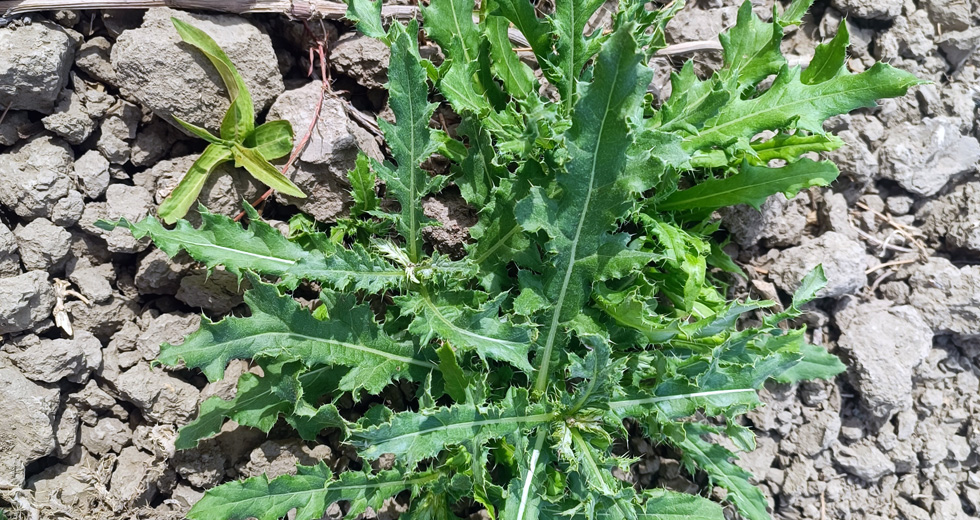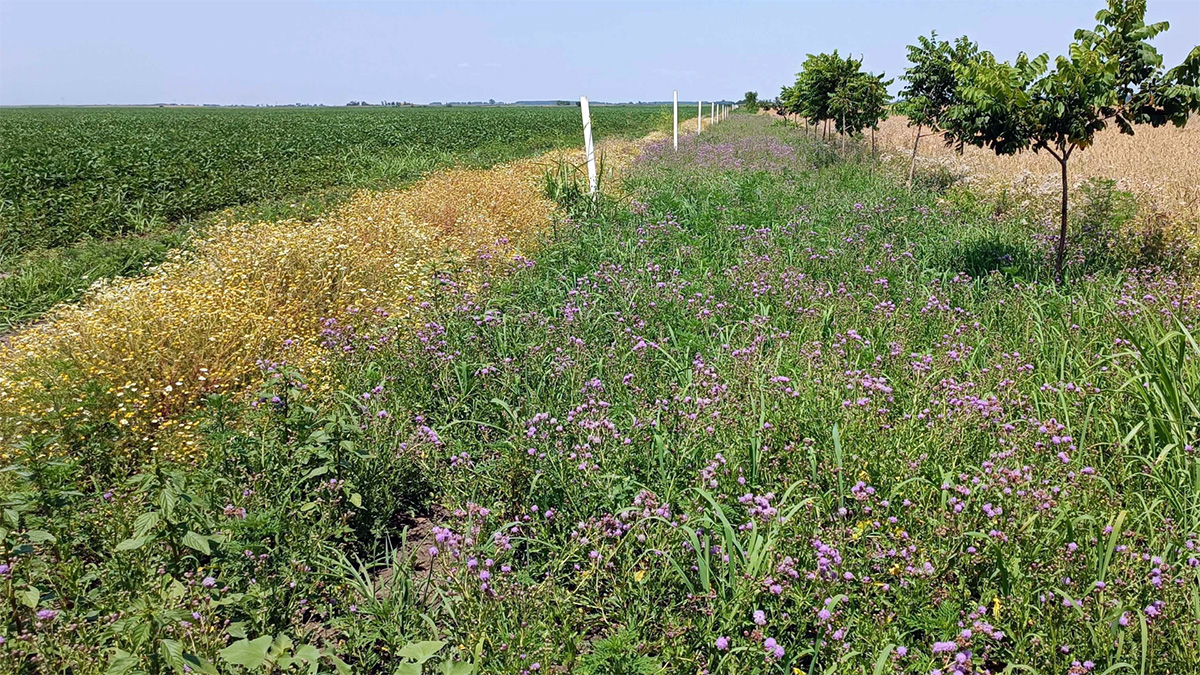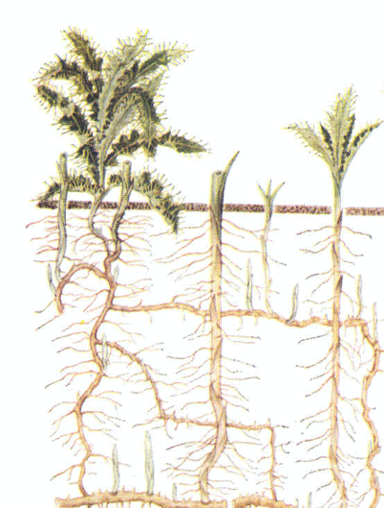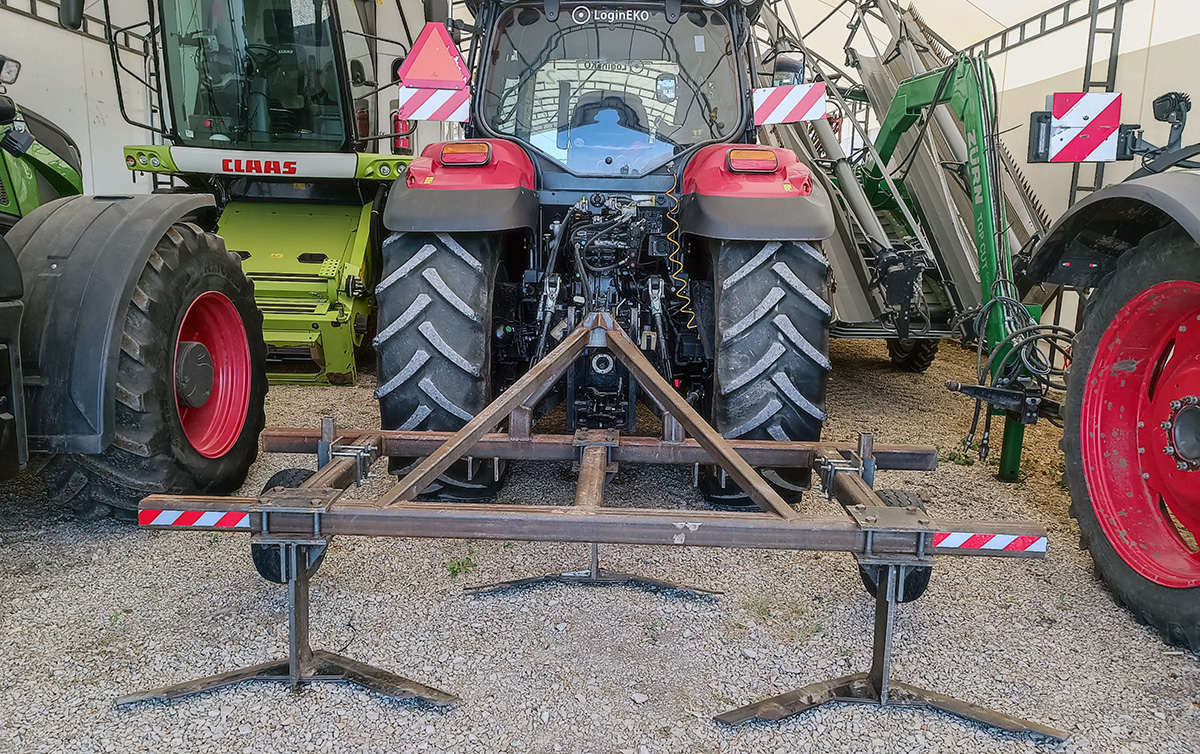Discussing Soil Health at the Soil ReUnion Congress 2025
October 29, 2025Over 200 experts met in Serbia to share new ways to restore soil health. Here’s what we learned and why healthy soil matters for us all.
Read articleCanada thistle posed a significant challenge to our organic crops—until we created a new machine to control it sustainably. Here’s how we made it happen.

Over the past two to three years, we have gained valuable insights into organic weed control.
While we’ve successfully managed most weeds without jeopardizing the sustainability of our organic production, some persistent weeds, like the Canada thistle, have proven more difficult to control. In certain plots, such as those in Đurđevo, Canada thistle coverage has increased, threatening the productivity of our fields.
The Canada thistle presents a unique challenge due to its morphological structure.
Unlike most weeds, only 10% of the plant’s mass is above the soil surface, while the remaining 90% lies underground as rhizomes. These rhizomes act as a storage system for sugar reserves, giving the plant enough energy to regenerate above-ground stems, making it tolerant to most weed control methods.
Canada thistle rhizomes can reach depths of up to 3 meters, allowing the plant to access underground water and survive even in drought conditions. Due to this structure, controlling it is a challenge, even with conventional farming methods using herbicides.
On our organically certified farm we abstain from synthetic pesticides, making this challenge even more complex.

Agronomists and researchers agree that the most effective strategy for controlling Canada thistle is to exhaust its sugar reserves before it enters the early flowering stage. At this point, the plant starts translocating sugars to its rhizomes to replenish its depleted reserves. By targeting the plant before this process begins, the root system is weakened, significantly reducing its capacity to regrow.
We have experimented with biological methods, including planting crops like Sudan grass and Forage sorghum. These crops can suppress the growth of weeds by outcompeting them for resources. While these methods have shown some success, they have not been sufficient to bring Canada thistle under control.
To achieve satisfactory results, it is essential to combine these biological methods like crop rotation with mechanical solutions, as organic farming rarely provides a single, comprehensive answer to complex challenges. Therefore, we needed a new approach to manage Canada thistle more effectively.
To address the limitations of biological methods, we looked for a mechanical solution.
During our research, we came across a machine originally designed in the 1930s to reduce wind erosion. Although its primary function wasn’t weed control, we saw potential in adapting it to tackle perennial, rhizomatous weeds like Canada thistle.

After reaching out to major European equipment suppliers, we found that this machine was no longer in use. Faced with this challenge, we relied on local expertise, reverse-engineered the machine, and built a simplified prototype that has proven to be highly effective in Canada thistle control.
The prototype we developed has several key advantages:
These features make the machine effective in controlling Canada thistle while conserving soil structure, moisture and maintaining low fuel consumption.
Despite these strengths, the machine is not without its limitations, including its inability to operate on compacted soil and the risk of weed regeneration if rain follows immediately after use. Additionally, the working blade tends to wear out relatively quickly, requiring frequent maintenance.

Based on the prototype’s success, we plan to collaborate with a reliable blacksmith shop to produce two machines with a working width of 6 meters each.
The machine was tested on 282 hectares across two locations, demonstrating two to four times lower fuel consumption compared to traditional equipment like disc harrows and grubbers, respectively.
By optimizing this mechanical solution in combination with a targeted crop rotation strategy, we believe we are on the verge of significantly improving organic weed control. This innovation will allow us to manage Canada thistle and other persistent weeds more effectively, without compromising our commitment to organic farming principles.
Over 200 experts met in Serbia to share new ways to restore soil health. Here’s what we learned and why healthy soil matters for us all.
Read articleThe Plant Food Summit 2025 brought together Europe’s food system leaders to discuss how plant-based innovation can drive a healthier, more resilient, and future-proof food system. Here’s how they’re turning ambition into action.
Read articleThe updated EAT-Lancet report calls for urgent transformation of the global food system. Here’s what we learned at the launch and how our work supports this change.
Read article